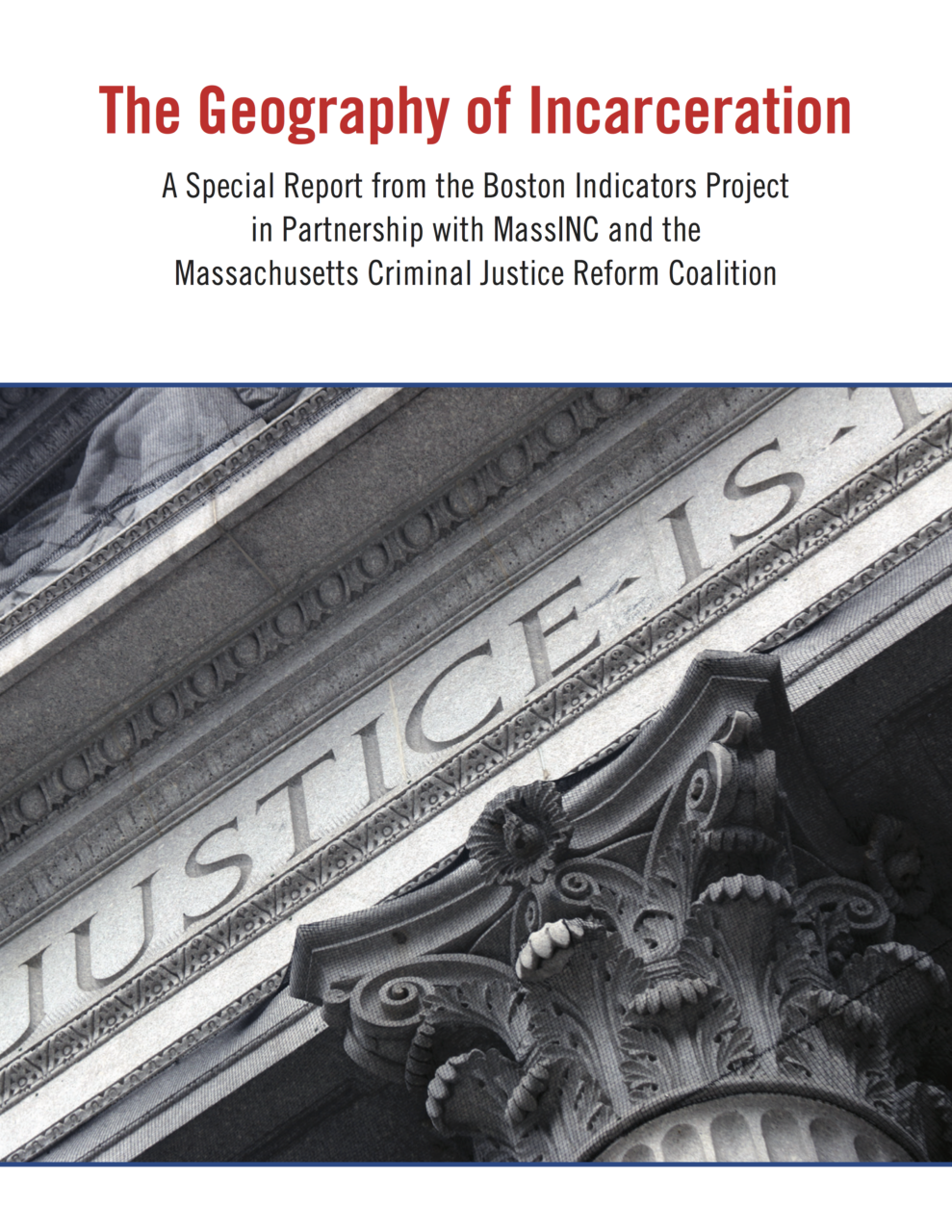This paper explores the geography of incarceration in Boston, providing timely information as state leaders engage in an unprecedented effort to find strategies to operate our criminal justice system in a more cost-effective manner, and redirect the savings toward models that decrease crime and strengthen neighborhoods. The first phase of this federally-funded endeavor, which is known as the Justice Reinvestment Initiative (JRI), is expected to conclude in January with the filing of comprehensive reform legislation.
With three-quarters of those convicted of a crime in Massachusetts having had prior involvement with the justice system, there is now growing agreement among public sector leaders, many of whom are involved in the JRI process, that our system is failing to “correct” the behavior of individuals who pose harm to the community. To date, the reform conversation has focused heavily on the over reliance of correctional facilities to manage people with substance use and mental health disorders. While this is certainly a major problem that has to be addressed, leaders can also use this opportunity to reassess how policies leading to mass incarceration have differentially affected low-income minority neighborhoods.
Building an equally strong consensus around this concern is important, as many see relatively low overall incarceration rates in Massachusetts as indication that our state has avoided the worst of mass incarceration. But over the last three decades, incarceration has actually risen at a faster rate in Massachusetts than in the nation overall and tough on crime policies have driven incarceration rates up to exceptionally high levels in Boston’s communities of color
